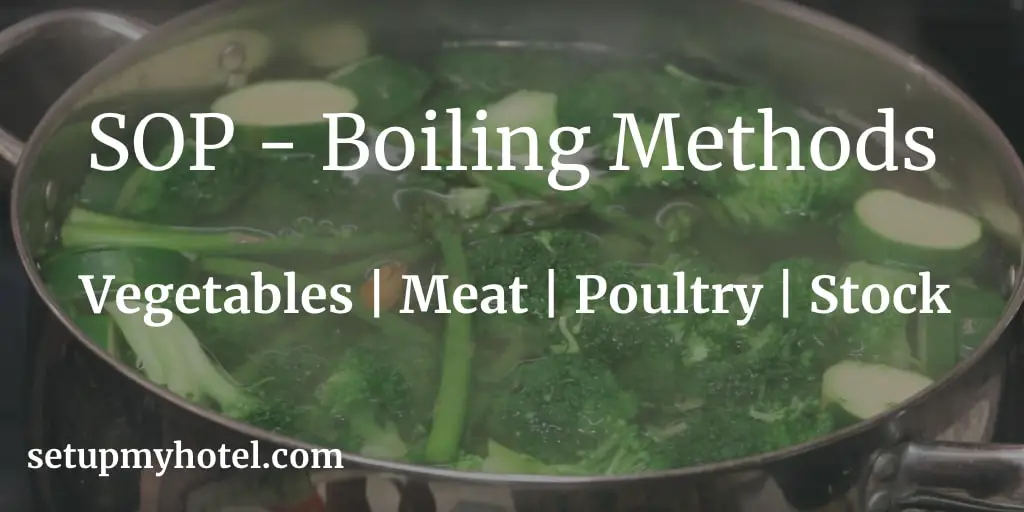Methods For Boiling Food In The Hotel Kitchen
Every Cook should understand the basic principles of boiling and how to use them. Depending on the type of food, the chef should know when to add cold or hot water to adjust the boiling of water or the liquid.
The Executive Chef and the Sous Chef should be responsible for ensuring that the correct boiling method is used by the hotel staff. The hotel training and HRD department should develop and implement proper written Kitchen SOPs to ensure the same is implemented correctly throughout all the food preparation outlets.
BoilingBoiling - A moist heat cooking method that uses convection to transfer heat from a hot (approximatel... Food Standard Procedures:
- Always heat to near boiling point, and allow the water to bubble or keep it just below boiling point (simmer) without the lid.
- Chefs should note that the rapid boiling can break up the finer vegetables and the below points to be noted while boiling.
- In cold water with cover – Allow food to absorb water and cook evenly to prevent toughness and hardness on the exterior surface.
- In cold water or stock without cover – Cooking at a temperature under the boiling point will prevent cloudiness.
- In boiling water with cover – Food cooks more quickly and retains more vitamins, minerals, and colour.
- In rapidly boiling water without cover – Starch on the exterior of pasta gelatins and boiling water keeps the pieces from adhering to each other.
- Always allow to boil – potatoes, and dried vegetables.
- Do not allow to boil – clear stock, clear broths, and meat jellies.
- Allow to boil rapidly – for pasta and rice.
- Allow to boil at the beginning – for blanched meat & poultry (beef, veal mutton, lamb, chicken), or when cooking vegetables.
- Use a slow boiling water without cover – to control simmering, first allow to bubble to close the pores. ReduceReduce - To boil or simmer a liquid to a small volume. Usually; this is done to concentrate flavours... temperature and simmer gently and add more liquid if necessary.
- Allow to boil at the beginning – for blanched meat & poultry eg: beef, veal mutton, lamb, chicken, etc., or when cooking vegetables.
Training Summary questions:
Q1. What is the purpose of this SOP?
Q2. What will happen if the vegetables are let to boil rapidly?
Q3. What type of boiling should be done for potatoes?
Q4. What boiling method should be used for meat and poultry?
Q5. For clear stock, clear broths, and meat jellies what kind of boiling is recommended?
Patreon Only SOP Download
SOP Number: Kitchen / F&B Production SOP – 16 Department: Kitchen / Food Production - Boiling Methods Date Issued: 29-Nov-2018 Time to Train: 20 Minutes












